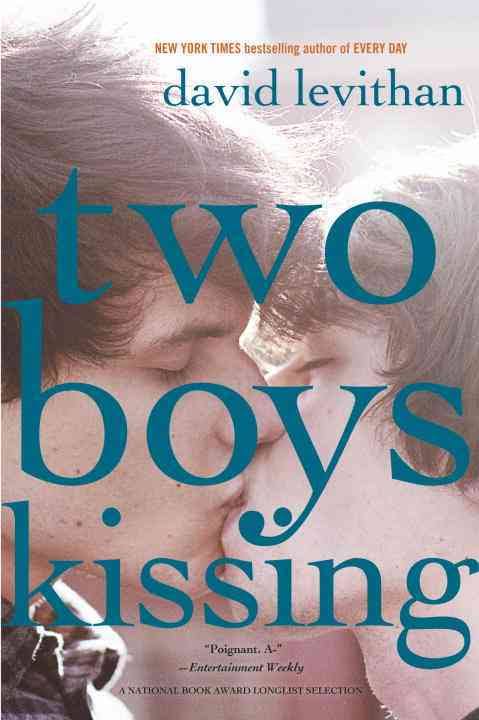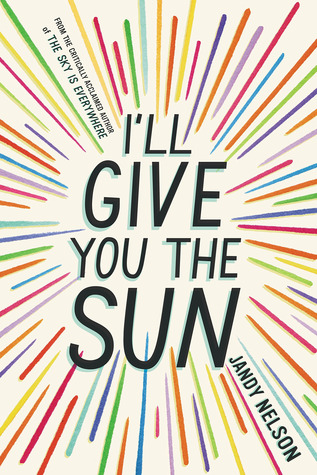 In my last post, I introduced the topic of cultural inheritance in intergenerational queer communities. Here, I continue to develop this idea as it relates to queer YA literature, focusing on one of the main complications that arises through this model.
In my last post, I introduced the topic of cultural inheritance in intergenerational queer communities. Here, I continue to develop this idea as it relates to queer YA literature, focusing on one of the main complications that arises through this model.
This complication is evident in Nancy Garden’s Annie on My Mind, a pivotal YA novel in its early positive representation of lesbian characters. Published in 1982, the narrative follows Liza as she meets and falls in love with the eponymous Annie.1 As a pivotal text, the novel seems to balance on diverse perspectives regarding homosexuality.
Yet, when Liza’s parents discover that she and Annie are romantically involved, her father tempers his reluctant acceptance of Annie’s sexuality with a warning of the future that now faces her:
[M]aybe it’s just that I love you […] so much that I have to say to you I’ve never thought gay people can be very happy—no children, for one thing, no real family life. Honey, you are probably going to be a damn good architect—but I want you to be happy in other ways, too, as your mother is—to have a husband and children. I know you can do both. (Garden 191)
This view of homosexuality as a hindrance to the family, a hindrance to child futurity, harkens back to Edelman’s work (discussed in my last post) that isolates queer individuals from their biological family structures.
This is not the only depiction that Garden offers her readers, however; as I will discuss below, Liza and Annie encounter a number of other (positive) perspectives. Even in the passage above, Liza resists her father’s line of thinking: “I am happy, I tried to tell him with my eyes. I’m happy with Annie […]—we both were” (Italics in original, Garden 191). Yet, her father’s perspective and the ensuing split between Liza and her parents marks a tradition of queer YA problem novels that address homosexuality as the problem, evidenced by the way they fracture the family structure.
This view of how queer characters must interact with their parents and families has been criticized by a number of scholars who perceive this plot point as outdated. Despite this view, however, it has found its way into contemporary publications. Emily M. Danforth’s The Miseducation of Cameron Post, published in 2012, begins with an even harsher representation of homosexuality tearing a family apart.2 On the night that twelve-year-old Cameron shares her first kiss with her best friend, Irene, she learns that her parents have died in a car accident. For the remainder of the novel, Cameron worries that her being a lesbian is somehow connected to her parents’ deaths. Not only does the narrative never fully correct this view, but Cameron also finds herself physically separated from her aunt—who has stepped in as her guardian—when her sexuality is discovered four years later and she’s shipped off to camp for conversion therapy.
The novel takes place in the late 1980s and early ‘90s, and this may account for the outdated disparity between sexuality and family life. Yet this representation is not merely negative, but incongruous with the reality that many contemporary readers encounter. While realistic representations are not a requirement for literary publications (this is a fictional work, after all), scholars like William P. Banks have noted that the lack of access to more contemporary experiences marks a clear void in this genre.3 This is not merely about the types of characters readers might wish to see; this is about the options that queer youth view as available to them. From reading queer literature, Banks concludes, “What I learned to hope for was escape, a calculated move away from my family and community and, if possible, the good sense not to call home again” (Banks 33).
Caroline E. Jones echoes Banks, arguing that teen readers are merely looking to “see themselves” in the YA texts they read.4 According to her, however, this is rarely the scenario they encounter:
While it is an unfortunate fact of life in the twenty-first century that many LGBTQ teens are still rejected by communities, friends, and family because of their sexuality, it is no longer the only, or even dominant, reality; novels working within the genre of realistic fiction must acknowledge multiple truths about being lesbian, just as they do diverse truths about being straight. (Jones 91)
While Banks blames publishers for this disparity between outdated narratives and present experiences, several recently published YA novels do present more positive representations—with queer individuals being accepted and embraced by their families (Banks 36).
 In David Levithan’s Two Boys Kissing, seven different family scenarios are described.5 Of these, four sets of parents respond in an unquestionably positive manner to their son’s homosexuality. Through the course of the novel, two other sets of parents come to accept their son’s sexuality, and the novel ends with only one set of parents still portrayed as resistant.
In David Levithan’s Two Boys Kissing, seven different family scenarios are described.5 Of these, four sets of parents respond in an unquestionably positive manner to their son’s homosexuality. Through the course of the novel, two other sets of parents come to accept their son’s sexuality, and the novel ends with only one set of parents still portrayed as resistant.
While the structure of Levithan’s novel lends itself well to illustrating the variety of representations that those like Banks and Jones have called for, other works focus primarily on the positive experiences of queer youth and their families. Jandy Nelson’s I’ll Give You the Sun is a heart-breaking YA novel that recounts the challenges faced by twins Jude and Noah between the ages of 13 and 16, yet one of the few uplifting points in this text is the positive way in which their parents respond to Noah’s coming-out.6
Far from the isolating experiences described in earlier YA texts, Nelson goes so far as to portray Noah’s father as a kind of replacement after a falling out between Noah and his then  boyfriend, Brian. When Noah’s father takes him out to eat, they exchange nature facts and laugh together in a way that Noah explicitly connects to his past interactions with Brian: “I’m feeling supernaturally good for once—it’s been so long—so good I start blabbing like I haven’t since Brian left” (Nelson 256). This exchange is miles away from the first passage from Annie On My Mind, addressed at the beginning of this post.
boyfriend, Brian. When Noah’s father takes him out to eat, they exchange nature facts and laugh together in a way that Noah explicitly connects to his past interactions with Brian: “I’m feeling supernaturally good for once—it’s been so long—so good I start blabbing like I haven’t since Brian left” (Nelson 256). This exchange is miles away from the first passage from Annie On My Mind, addressed at the beginning of this post.
While that passage marked a negative exchange between Liza and her father, later interactions offer more positive options to Liza and Annie. Through the course of the novel, the girls learn that two of Liza’s teachers are lesbians and have been in a relationship with one another for many years. As Ms. Stevenson and Ms. Widmer retell their experiences to the younger girls, Ms. Widmer recounts how difficult it was for her when she learned that Ms. Stevenson had been discharged from the military. In retelling this memory, however, Ms. Widmer’s comments portray a clear shift in her perspective that reflect a similar shift in queer YA problem novels:
“It took me a couple of years to realize,” said Ms. Widmer, “that it wasn’t my fault—that it wasn’t my homosexuality that had gotten [Ms. Stevenson] discharged, it was what people wrongly made of it.” (Garden 231)
Christine A. Jenkins notes this shift in queer YA problem novels as one that moves the “problem” from being homosexual to living in a homophobic environment.7
This move towards more positive representation of queer characters will continue in my next post, which will focus on the challenges presented by the proliferating categories that YA writers are now called upon to represent.
- Garden, Nancy, Annie on My Mind. Farrar Straus Giroux, 2007. ↩
- Danforth, Emily M., The Miseducation of Cameron Post. Balzer + Bray, 2012. ↩
- Banks, William P. “Literacy, Sexuality, and the Value(s) of Queer Young Adult Literatures.” The English Journal, vo. 98, no. 4, 2009, pp. 33-36. JSTOR, www.jstor.org/stable/40503258. ↩
- Jones, Caroline E. “From Homoplot to Progressive Novel: Lesbian Experience and Identity in Contemporary Young Adult Novels.” The Lion and the Unicorn, vol. 37, no. 1, 2013, pp. 74–93., doi:10.1353/uni.2013.0003, p. 74. ↩
- Levithan, David. Two Boys Kissing. alfred a. knopf, 2013. ↩
- Nelson, Jandy, I’ll Give You the Sun. Dial Books, 2014. ↩
- Jenkins, Christine A. “Young Adult Novels with Gay/Lesbian Characters and Themes, 1969-92: A Historical Reading of Content, Gender, and Narrative Distance.” Over the Rainbow: Queer Children’s and Young Adult Literature, edited by Michelle Ann Abate and Kenneth Kidd, University of Michigan Press, 2011, pp. 147–163. ↩

Such a fascinating article on a lovely day like today; thank you for your efforts in creating such a beneficial article. NewYorkNYDMV